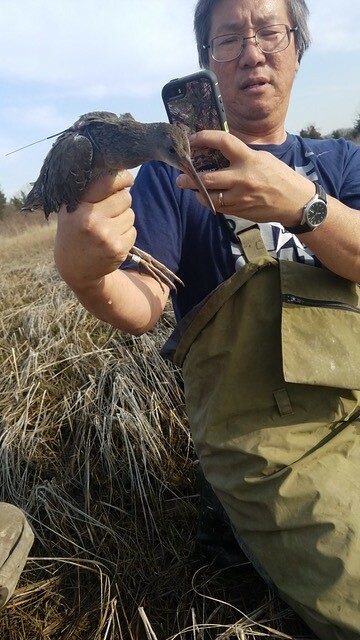
Research scientist Min Huang is conducting a multi-year study of the clapper rail, a salt marsh bird, designed to assess nesting success and adult survival rates of this declining species. The project is being conducted at Hammonasset State Park and the East River Marsh Complex, two of Connecticut’s larger and higher-quality remaining salt marshes.
The project is supported through the Connecticut Department of Energy and Environmental Protection, (DEEP) where Huang is employed as the migratory bird program leader. Huang is a graduate of the College, earning a BS in wildlife management in 1992 and Ph.D. in natural resources in 2010. He is affiliated with the Department of Natural Resources and the Environment (NRE) Wildlife and Fisheries Conservation Center.
“I try to direct some of my research through the University to highlight the work being done in NRE and the Wildlife and Fisheries Conservation Center,” Huang says. “The decline of most of our obligate salt marsh bird species is of great interest to many of us in the conservation community. This was a perfect project to initiate through the University.”
Very little research has been done on the clapper rail in the northeast as Connecticut is close to the northern fringe of its breeding range. But while the species tends to be more abundant in the Mid-Atlantic states, historically Connecticut has had a substantial population of clapper rails.
The study uses nanotag technology to track the adult birds. The tags emit a unique frequency that is recorded when a bird travels near an antenna station. Currently, there are towers along the Connecticut coastline and the Atlantic seaboard, as nanotags are used on a variety of species. Through this study and with support from DEEP, additional towers were built at Barn Island Wildlife Management Area,Harkness State Park, Guilford Marina, and Sherwood Island State Park. These complement the towers that were already standing at Great Island Wildlife Management Area and Hammonasset State Park.


